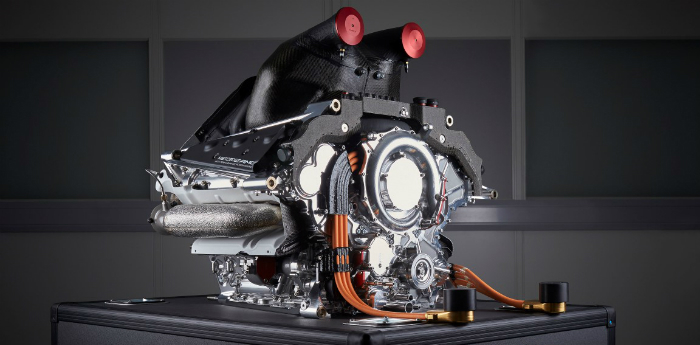I must confess that I have never really understood the Index of Performance category at Le Mans, but a recent communication from Mercedes Benz concerning its turbo-hybrid F1 engine shed some light on it for me.
Now a lot of people don’t like F1’s latest powertrains, and while I won’t be desolate when they give way in 2021 to something less complex, probably of V6 configuration and with two turbos and a decent exhaust note that is more in keeping with a true racing engine and doesn’t remind you of leaf blowers, I do salute their incredible technology.
They have showcased to the world the brilliance of F1’s engineers, most notably Andy Cowell and his awesome team at Mercedes’s Brixworth facility. Right from the get-go, when the 1.6-liter V6 engines were first raced in 2014, it was clear that they had done a superb job of generating excellent power while mating two different types of incredibly complicated energy harvesting systems – kinetic energy and heat – yet consuming far less fuel than their predecessors, the 2.4-liter V8s.
In my mind, this is one of the great F1 stories, and needs to be better known.
Extraordinarily, FIA president Jean Todt made the decision not to publish a little brochure that had been prepared and which outlined just how clever the technology was.
That left the door open for Bernie Ecclestone, then allegedly engaged in his own campaign to drive down the price of F1, to be openly critical of it during his Gerald Ratner moment when he told the world how bad it all was. He was then joined, at the 2014 Malaysian GP, by Ferrari president Luca di Montezemolo and Red Bull owner Dietrich Mateschitz as they bleated how awful it was that F1 had become an engine formula (in which they couldn’t win). Enzo Ferrari, of course, had always believed it was just that, while poor old Didi’s cars could no longer rely on the aerodynamic advantage conferred by Adrian Newey’s genius.
It ended up with the media having to do Todt’s job for him in defending his sport’s technological genius, but to a large extent it was too late to repair the harm done to its global image, and the impression that F1 was no longer worth watching lingered, unfairly.
When you consider the myriad problems that so many teams experienced in the early tests in 2014, and that 15 of the 22 starters in the season-opening Australian GP in Melbourne finished and only five of the retirements were engine-related, it was nothing short of a technological miracle. The sport should have been massively proud.
The introduction of these power units was a prescient step that maintained F1’s relevance to road cars by acting as a development crucible. I still believe this to be important, because you only have to look at how cigarette and alcohol advertising has been/is being stamped out by those who elect to tell us what we should all be doing, to see how the sport needs to guard against some future so-called do-gooder who decides that motor racing should be banned. Giving F1 an underlying purpose beyond its role as entertainment makes sense to me.
That Mercedes communication informed me that its excellent 2017 M08 EQ Power+ F1 engine has hit a landmark on the dynamometer. For the first time, an internal combustion petrol engine (with added ERS systems), has exceeded 50% thermal efficiency.
It is believed that it can justly claim to be the most-efficient racing engine in history.
So what’s thermal efficiency (which is what that Le Mans Index of Performance was all about)? Well, it’s the ratio of work output of a heat engine in relation to its heat input, and it’s a much discussed topic in technical circles these days, not least because the fuel-flow limit rate of 100kg/h is so strict.
Gas turbines and jet engines can boast up to 60% thermal efficiency, while marine diesels are also pretty effective at around 51.7%, but by petrol ICE standards, the MO8 EQ Power+’s performance is outstanding.
By comparison, the old 2.4-liter V8s achieved 29%, and the original Mercedes turbo-hybrid was around 44%, yet the latest iteration produces more than 100bhp more while achieving its 50%+.
“The last time we saw these levels of power in Formula 1 was back in 2005, with a V10 that guzzled fuel at a whopping 194kg/h,” Mercedes said on its website. Producing more power than waste energy, therefore, “is a remarkable milestone for any hybrid, and especially a flat-out racing engine.”
Chapeau, Mercedes. <



